In an era where fitness is no longer just about looking good but also feeling capable, functional fitness training is revolutionizing the way we approach exercise. Gone are the days when traditional workouts focused purely on aesthetic goals. Today, people want fitness that helps them move better in their daily lives. Functional fitness training is about training your body for real-life movements, enhancing the strength, flexibility, and endurance needed for everyday activities. From picking up groceries to lifting children, functional fitness ensures your body is prepared for the physical demands of day-to-day life.
What Exactly is Functional Fitness Training?
Functional fitness training emphasizes exercises that replicate movements you perform in real life, making it easier for you to perform tasks with less strain. Unlike traditional gym routines that might isolate specific muscle groups, functional fitness engages multiple muscle groups at once, training your body to work as a coordinated unit. These movements focus on strength, stability, and flexibility—key factors in maintaining proper function throughout your life.

Why Should You Prioritize Functional Fitness?
The benefits of functional fitness go beyond just improving your workout performance. Here’s why you should add it to your routine:
Boosts Functional Strength
Everyday activities like carrying bags, squatting down, and climbing stairs require functional strength. Functional fitness builds the muscle groups used in these tasks, making them easier and more natural.
Improves Flexibility & Mobility
A well-rounded functional fitness program enhances your flexibility and joint mobility, which decreases the risk of injury and ensures your body moves smoothly.
Prevents Injuries
By strengthening and improving coordination in the muscles that are essential for daily tasks, functional fitness reduces the likelihood of injuries that often result from poor posture, muscle imbalances, or overuse.
Enhances Stability and Balance
Many functional exercises engage your core, which is critical for maintaining balance and posture. A strong core stabilizes your body and protects your spine, reducing the chances of falls and discomfort.
Supports Overall Fitness
Functional fitness combines cardiovascular endurance, strength training, and flexibility, making it a comprehensive workout for your overall fitness. It targets your entire body, increasing strength, agility, and stamina.
Core Functional Fitness Movements
To get the most out of functional fitness, it’s important to incorporate key movements into your routine. These exercises target multiple muscle groups and improve your performance in daily activities:
Squats
Squats are fundamental functional movements that strengthen the lower body and core. They help you sit, stand, and lift objects with ease.
Lunges
Lunges target the legs and improve your balance and coordination. This movement simulates walking or climbing stairs, enhancing your everyday mobility.
Deadlifts
Deadlifts engage the posterior chain (lower back, glutes, and hamstrings) and help with tasks like picking up objects from the ground. They promote proper posture and spinal health.
Push-Ups
Push-ups build upper body strength, particularly in the chest, shoulders, and triceps. They mimic pushing movements and improve stability.

Planks
The plank is a core-strengthening exercise that also works the arms, legs, and back. A strong core supports balance, flexibility, and movement efficiency.
Medicine Ball Slams
This explosive exercise strengthens the core and arms, enhancing power and cardiovascular endurance while simulating high-impact movements.
Kettlebell Swings
A great exercise for building power and endurance, kettlebell swings engage the core, legs, and back, promoting functional movement patterns.
Functional Fitness for All Fitness Levels
Functional fitness is versatile and can be adapted to anyone, regardless of fitness level or experience.
- For Beginners: Focus on bodyweight movements like squats, lunges, and push-ups. Start slow and progressively increase intensity as your strength improves.
- For Athletes: More complex movements like kettlebell swings, box jumps, and plyometrics enhance agility and explosive power.
- For Seniors: Functional fitness can be particularly beneficial for seniors, helping improve balance, joint stability, and mobility, reducing fall risk and enhancing independence.
- For Injury Recovery: If you’re recovering from an injury, functional exercises will help restore strength and range of motion, focusing on movements that improve functional mobility.
How to Get Started with Functional Fitness Training
Here are a few tips on integrating functional fitness into your routine:
Set Clear Fitness Goals
Start by determining what you want to improve—whether it’s mobility, strength, or overall fitness. Customize your workout based on these goals.
Focus on the Basics
Begin with simple bodyweight exercises to get familiar with the movements. As your body adapts, incorporate resistance tools like kettlebells, dumbbells, or resistance bands.
Create a Balanced Routine
A well-rounded functional fitness program should incorporate various movement patterns, such as pushing, pulling, squatting, and rotating.

Gradual Progression
Make sure you maintain good form and gradually increase the intensity of your exercises over time. Proper technique is more important than speed.
Seek Professional Help
Consider working with a functional fitness coach or personal trainer to guide you through exercises that are tailored to your needs.
How Functional Fitness Helps with Weight Loss
Functional fitness is also an excellent way to burn calories and promote fat loss. The combination of strength training, cardio, and full-body movements helps boost metabolism, build muscle, and reduce body fat. Functional exercises engage several muscle groups at once, increasing calorie expenditure and contributing to a leaner physique.
Functional Fitness and Injury Prevention
Incorporating functional fitness into your routine can significantly reduce the risk of injury. Functional exercises promote strength, mobility, and stability, which are crucial for avoiding overuse injuries, bad posture, and imbalances that lead to discomfort or injury.
Conclusion
Functional fitness training is about making your body work more efficiently and effectively in the real world. By incorporating functional exercises into your routine, you’ll improve your strength, flexibility, mobility, and endurance, all while preparing your body for the demands of daily life. Whether you’re an athlete, a beginner, or someone in need of injury recovery, functional fitness offers comprehensive benefits that go beyond traditional workouts.



Новые тренды в мире дизайнерской мебели.
Дизайнерская мебель премиум-класса http://www.byfurniture.by/ .